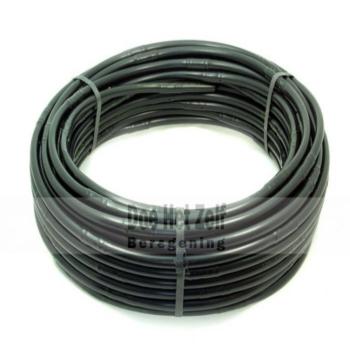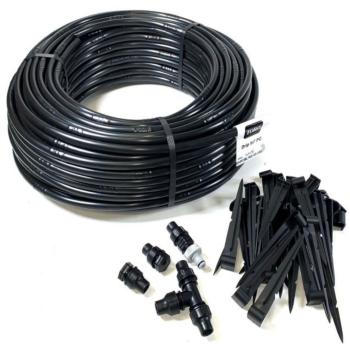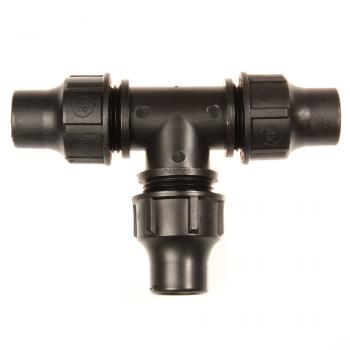Drip hose
Narrow border, hedge or a border with tall plantings? Use the inline drip hose here! See our manual at the bottom of this page.
Manual drip hose
Drip hose zones
In this calculation example, we assume the following data:
Working pressure: 2.0 Bar
Available flow rate: 1 m3/hour
Water flow rate irrigation tube: 2 liters/hour
Required length of irrigation tube: 200 meter
Step 1: Determine the maximum length of irrigation tube
The length of a drip hose segment has a maximum, because if the length is too long, the pressure at the end is too far reduced. At a pressure of 2.0 Bar and using drip hose with a release rate of 2 liters/hour, this is about 100 meters.
Step 2: Determine the total water consumption of the drip hose.
The output per membrane is 2 liters/hour. There are 3 membranes per meter which brings the consumption to 3 * 2 = 6 liters/hour. At a total length of 200 meters, the total water consumption is 200 * 6 = 1200 liters/hour ==> 1.2m3/hour.
Step 3: Determine the number of zones
The flow rate is 1 m3/hour and the calculated consumption in step 2 is 1.2m3/hour. Divide 1.2m3/hour by 1 m3/hour = 1.38 ==> 2 Zones
Watering with microdrip and drip hose systems
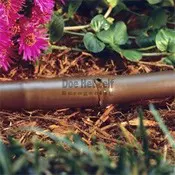
Even when using micro-irrigation, the goal is to saturate the soil deeply enough. Only the way to achieve this is different. With micro-irrigation, water is released slowly. In practice, this will not cause puddles or runoff of water. Also, getting to a depth of 15 cm is not a problem.
The problem with micro-irrigation is that the water must reach the planted area entirely. To do so, the water must flow sideways. This happens naturally due to the capillary action of the soil. With clay, by the way, this works better than with sandy soil. For this reason we recommend spacing the irrigation tube 30 cm apart with sand and 50 cm apart with clay. Intermittent watering has a negative effect on the lateral movement of water. It is therefore best to irrigate in only 1 irrigation cycle.
To get good results, we recommend the following approach:
- Start watering and continue until the planted area is saturated. Note the time required. In practice, this can take several hours due to the slow watering.
You can then program the above time in the irrigation computer.
Note: If the planted area cannot be completely saturated, it may be necessary to move the drip hoses closer together or to place more micro-irrigation emitters. In doing so, do not place them too close to the existing emitters. The goal is not to make wet soil wetter, but rather to reach the dry areas.
How often should it be sprinkled?
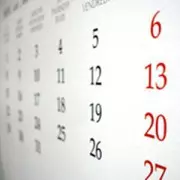
There is no golden rule for this. Every other day, once a week, every 3 days. It depends on the type of planting, the type of soil and the time of year. Your greenhouse with seeds needs water more often than your lawn. As a basis, the following can be assumed during the dry summer months:
- Lawn: 1 to 2 times per week
- Borders: once a week
- Potted plants and seeds: every other day
The above is purely indicative. The most important thing is to observe the plants and adjust if necessary. If necessary, for your specific plants, ask for advice at a garden center or look for information on the Internet.
Do not irrigate when the soil is still wet
It is not wise to irrigate very wet soil. Some plants will suffer from diseases and/or fungi. In short, it is bad for your garden. In addition, you are wasting water. Therefore, we recommend not watering or installing a weather sensor under these conditions. If enough rain has fallen, the cycle will be aborted or postponed. Better for the plants and your water bill. You can find the weather sensors in our webshop via this link.

